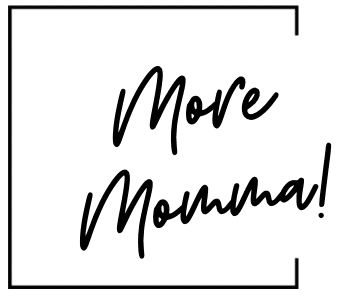In the face of unexpected events or natural disasters, having a well-organized emergency preparedness system is vital for the safety and well-being of individuals and families. I am sharing how to organize your emergency supplies in an easy and effective way with no stress!

Emergency preparedness doesn’t have to be stressful or overwhelming. And let me preface this post by one statement….. We are not peppers! This is not meant to cause any fear, anxiety or hysteria. This post is meant to make you feel confident in being prepared for any emergency or natural disaster.
I am going to share a series of blog posts sharing everything you need to know to be prepared without the stress or anxiety!
This system is easy to follow and can be accomplished over the course of several weeks, months or even years.
The goal is to add to each bin little by little. So let’s dive into the organizational bin system that I have in place and how it works.
The Emergency Preparedness Organization Bin System:
The bin system is the easiest way to stay organized and know what you actually have prepared. It is an easy and effective way to take inventory and to add to your stock when you can.
I highly suggest to do add to your emergency supplies little by little unless you have a ton of extra funds that you want to devote to this. You should not go into debt getting prepared!
This system uses a series of clear plastic bins that are easily labeled to organize your emergency supplies.
Basically use large bins with labeled categories and place all the items you need into the bins. I prefer using clear plastic bins so you can see what you have in the bin. I like to use these labels.
Make sure you label the outside of the bin while also creating a running list (I like to place the list in a sheet protector and tape it to the top of the bin) of what you have placed in the bin. This way you can easily take inventory of what you have and what you may want to add.
One item that will not be able to fit into a bin, but is a good item to think about investing in is a generator. We have this one which is solar powered and you just have to charge it ahead of time.
Here are the lists of bins with a shoppable list to grab everything you need to fill the bin. I would suggest to fill one bin a month so it doesn’t overwhelm your budget. I have listed the bins in order from most important to least important.
Emergency Bins To Have On Hand:
72 Hour Emergency Bin:
-
- Contents: Your 72 hour emergency backpacks for each family member. This doesn’t actually need to be placed in a bin. Just make sure you have your backpacks in an easy to access spot. We keep them in the garage. Refer to this post on everything you need for a 72 hour backpack.
- Purpose: To sustain the household with essential nourishment during the first 72 hours of an emergency.
First Aid Bin:
-
- Contents: First aid kit, prescription medications, basic medical supplies, and a list of emergency medical contacts. You can grab prescription medications from Jase Medical. If you need extra prescription medication consider Jase Medical. Click this link and you can use code: JAM-1792 at checkout to get $10 off. You can grab extra prescription medical along with common antibiotics and prescription medications. This comes in handy especially with all the prescription shortages.
- Purpose: To address injuries and medical emergencies promptly.
Hygiene and Sanitation Bin:
-
- Contents: Personal hygiene items, soap, deodorant, toothpaste, toothbrush, hand sanitizer, toilet paper, portable shower, sanitation bags, feminine hygiene, and cleaning supplies.
- Purpose: To maintain cleanliness and hygiene when regular facilities are unavailable.
Lighting Bin:
-
- Contents: Flashlights, puck lights, candles, matches, lanterns and fuel, head lights.
- Purpose: To maintain lighting when needed.
Cooking Bin:
-
- Contents: Figure out your preferred method of cooking without electricity and fill the bin with items that can accomplish that method of cooking. Some methods of cooking include a solar oven, dutch oven over fire, gas grill, charcoal grill, camping stove. Remember you will need the required fuel as well. Other items I would include are plastic cutting board, knife, mixing bowls, wooden spoon, spatula, measuring cups, dish washing bin, dish soap, paper towels.
- Purpose: To be able to cook without electricity.
Communication Bin:
-
- Contents: Radios, walkie-talkies, batteries, chargers, and a list of emergency contact numbers.
- Purpose: To establish and maintain communication within the household and with emergency services.
Laundry Bin:
-
- Contents: Baking soda, Borax, essential oils, cloths line, cloths pins. You can use the laundry bin as a make shift washing station if needed.
- Purpose: To maintain cleanliness of clothing without power.
Clothing and Bedding Bin:
-
- Contents: Extra clothing for different seasons, bathing suits (for showering or bathing), blankets, sleeping bags, and sturdy shoes.
- Purpose: To provide warmth, protection, and comfort during evacuation or sheltering in place.
Documents Bin:
-
- Contents: Important documents (ID, passports, insurance policies), USB drive with digital copies, and emergency cash.
- Purpose: To have essential records readily available for identification and insurance purposes.
Once you have these bins in place you can move onto more obscure bins such as your fun and activity bin or gardening bin.
A well-organized Emergency Preparedness Organization Bin System, coupled with comprehensive emergency plans, is a powerful strategy for building resilience and readiness.
Regularly review and update your bins and plans to ensure they align with your family’s specific needs and any changes in circumstances.
By taking proactive steps to be prepared, you empower yourself and your loved ones to face unexpected events with confidence and efficiency, ensuring the safety and well-being of all.

